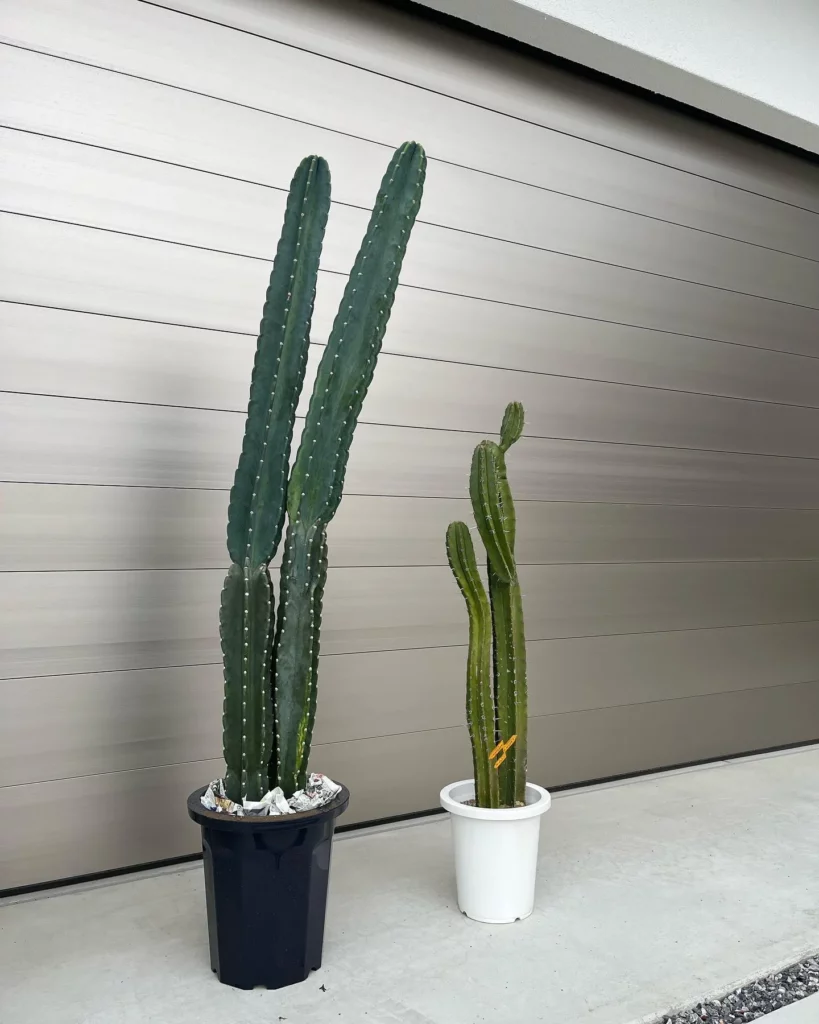The Beavertail Cactus, scientifically known as Opuntaria basilaris, is a clumping cactus with distinctive paddle-like leaves. Its grayish-green color and flat appearance make it a real showstopper in rock gardens, cactus gardens, or xeriscape landscapes. Not only is it disease-free and resistant to deer and rabbits, but it also requires very little care.
In addition to its ornamental value, the Beavertail Cactus also attracts a variety of beneficial insects, hummingbirds, songbirds, and bees with its stunning rose-purple blooms in spring and early summer.
Key Takeaways:
- The Beavertail Cactus, also known as prickly pear or beavertail prickly pear, is a clumping cactus with flat, grayish-green, paddle-like leaves.
- It is native to the deserts of the southwestern United States and northwest Mexico.
- The Beavertail Cactus is well suited for rock gardens, cactus gardens, or xeriscape landscapes.
- It is disease-free, deer and rabbit proof, and requires very little care.
Beavertail Cactus Appearance
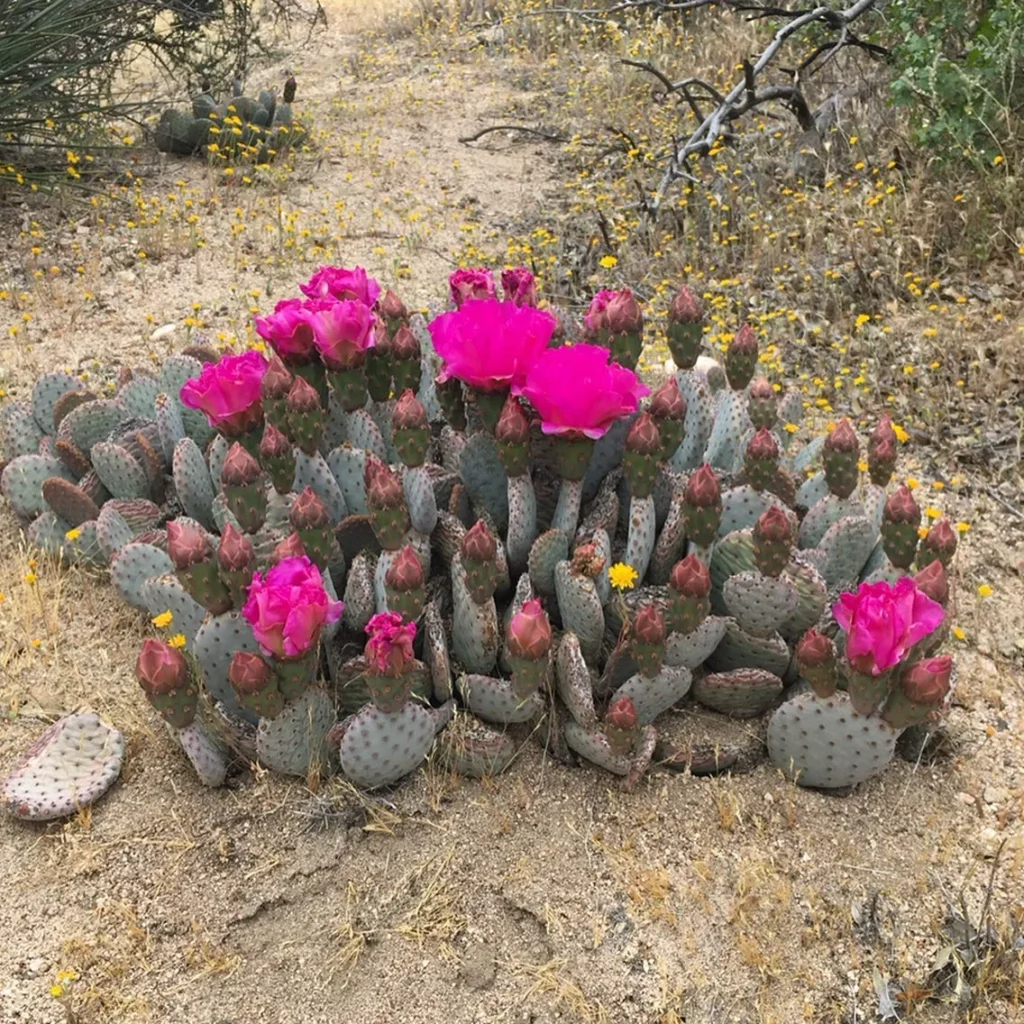
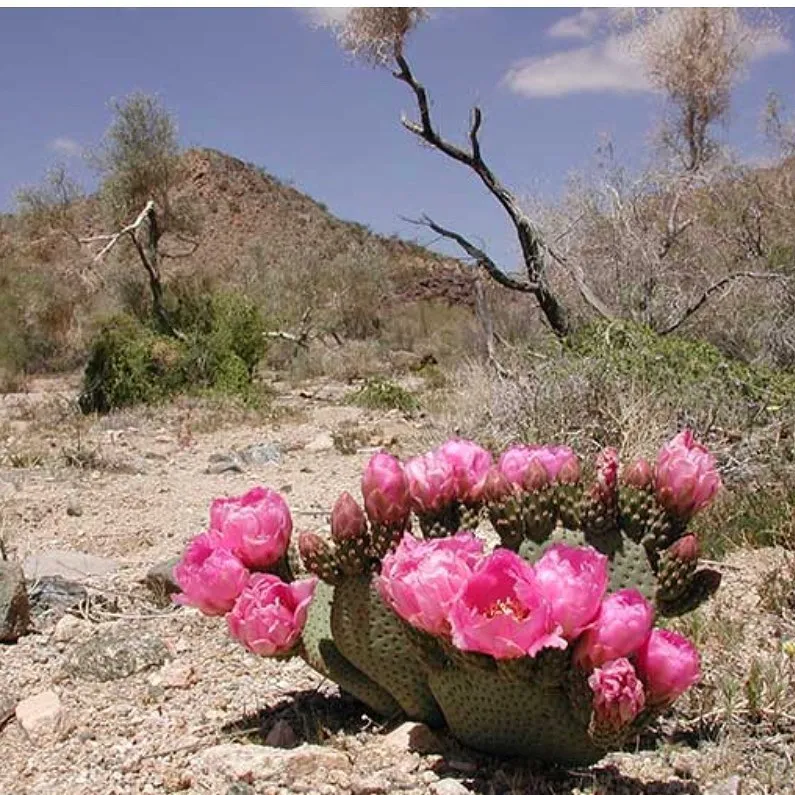
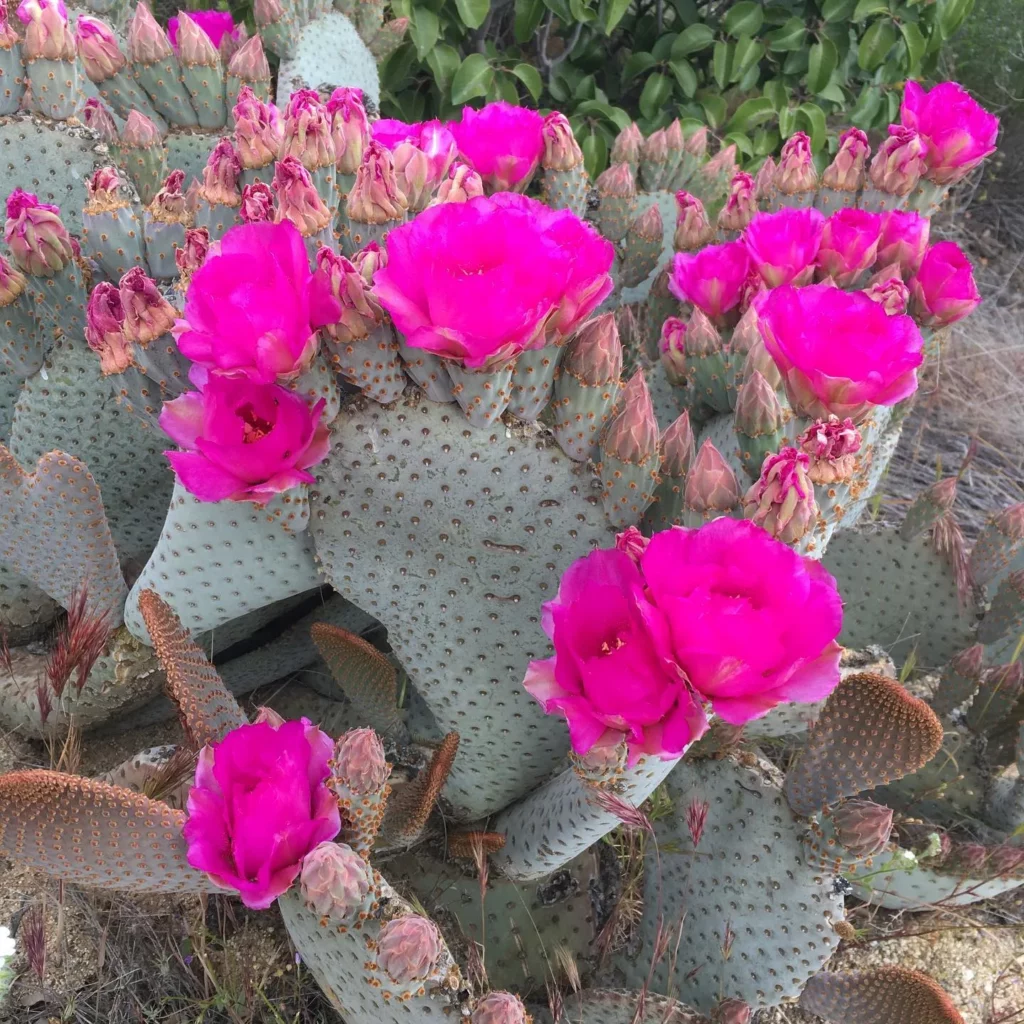
The Beavertail Cactus, also known as prickly pear or beavertail prickly pear cactus (Opuntaria basilaris), features unique and eye-catching characteristics that make it a standout addition to any garden or landscape. Here are some key features of the Beavertail Cactus appearance:
- The cactus has oval-shaped segments that resemble the tail of a beaver.
- Its segments are greenish-purple in color and adorned with short, bristly spines along the edges.
- The plant can grow up to three feet tall and four feet wide, creating a visually striking presence.
- In late spring, it produces showy fuchsia-colored to reddish-purple flowers that add a burst of vibrant color to the surroundings.
- After flowering, the Beavertail Cactus produces spineless, brown edible fruit, which adds to its appeal.
Beavertail Cactus Light Requirements
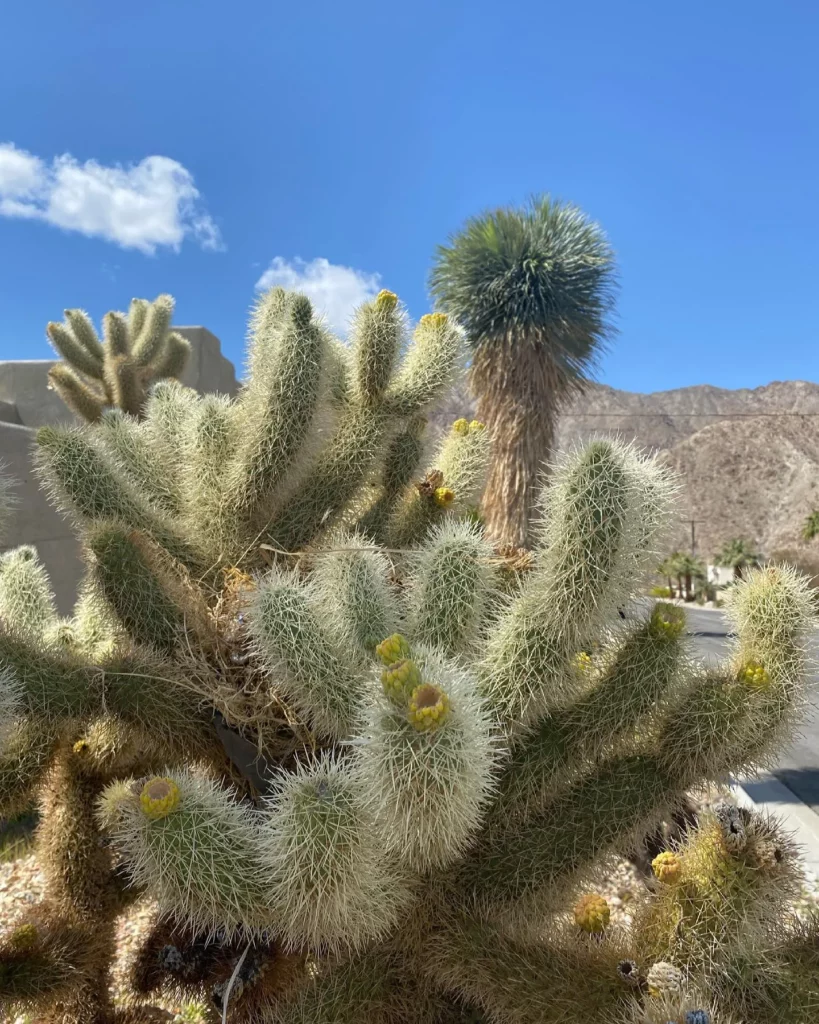
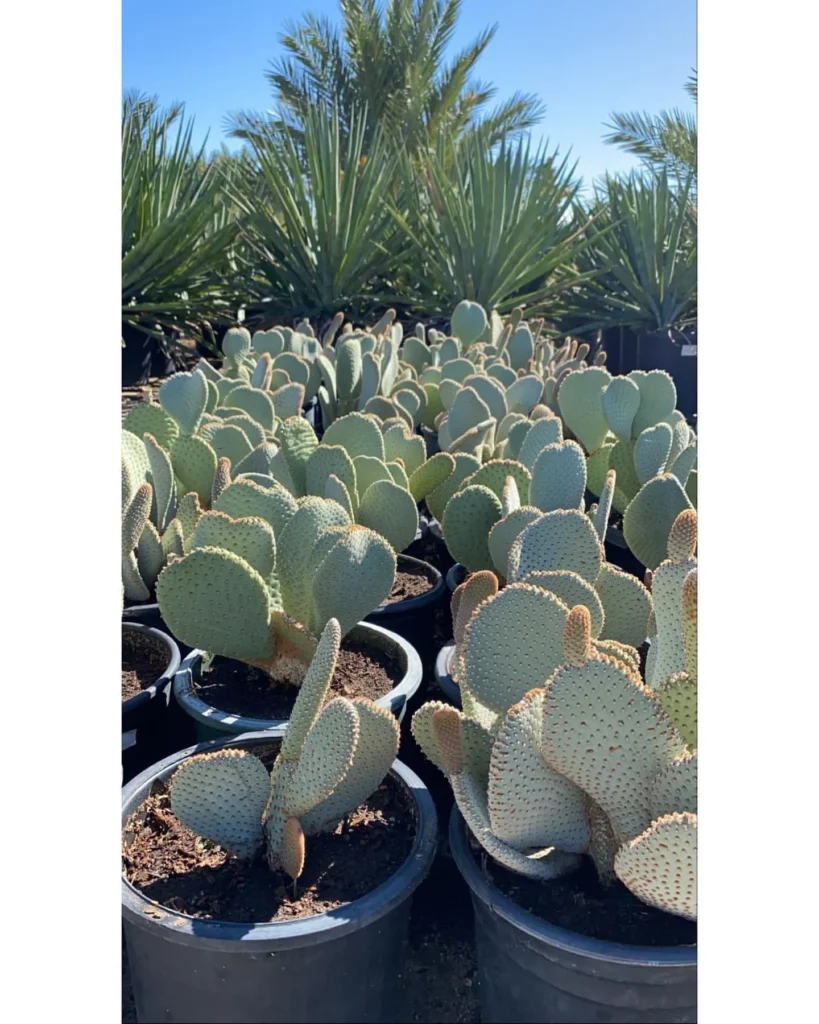
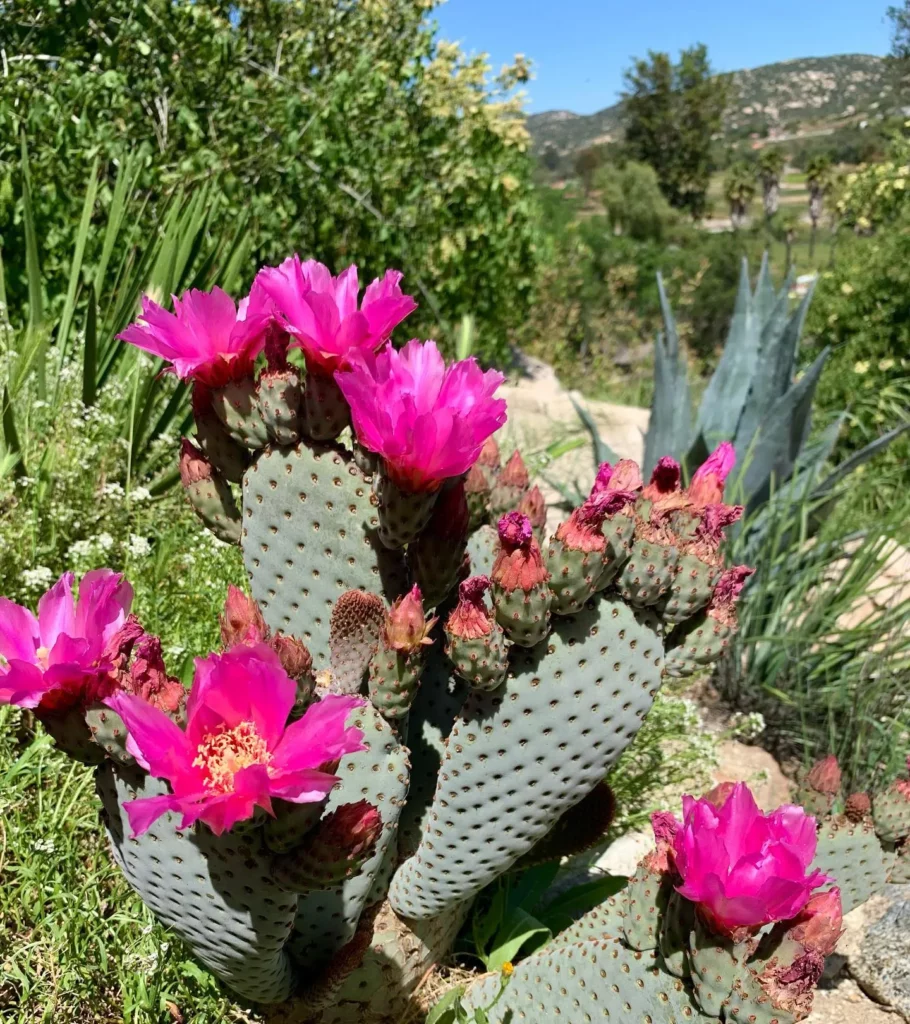
Proper light exposure is essential for the healthy growth and development of Beavertail Cactus. This vibrant and unique plant thrives in full sunlight, requiring a location with ample direct sunlight. It is recommended to place the cactus in an area with reflected heat, such as a south-facing or west-facing position. This will ensure that the cactus receives the necessary light intensity and warmth it needs to flourish.
In terms of hardiness zones, Beavertail Cactus is suitable for USDA plant hardiness zones 8 and above. If you live in a colder climate, it is advisable to grow this cactus in containers so that it can be easily moved indoors during the winter months. Placing the container in a sunny spot, such as a patio or deck, will provide the cactus with the required sunlight exposure.
When growing Beavertail Cactus indoors, it is important to choose a well-lit location near a window that receives at least 6 hours of direct sunlight per day. You can also supplement natural light with artificial grow lights to ensure the cactus receives adequate light in indoor settings.
Key Points:
- Beavertail Cactus requires full sunlight for healthy growth.
- Place the cactus in a location with reflected heat.
- Hardy in USDA plant hardiness zones 8 and above.
- In colder climates, grow Beavertail Cactus in containers for easy indoor movement.
- Indoor plants require at least 6 hours of direct sunlight or supplemental grow lights.
Beavertail Cactus Watering
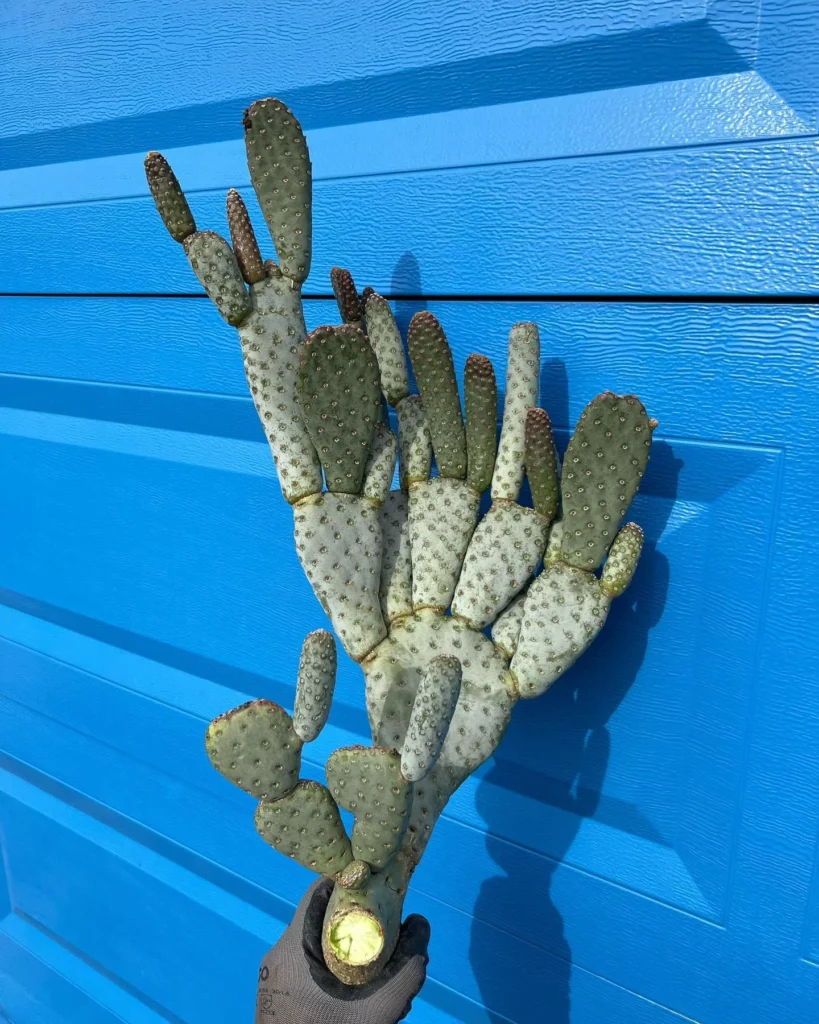
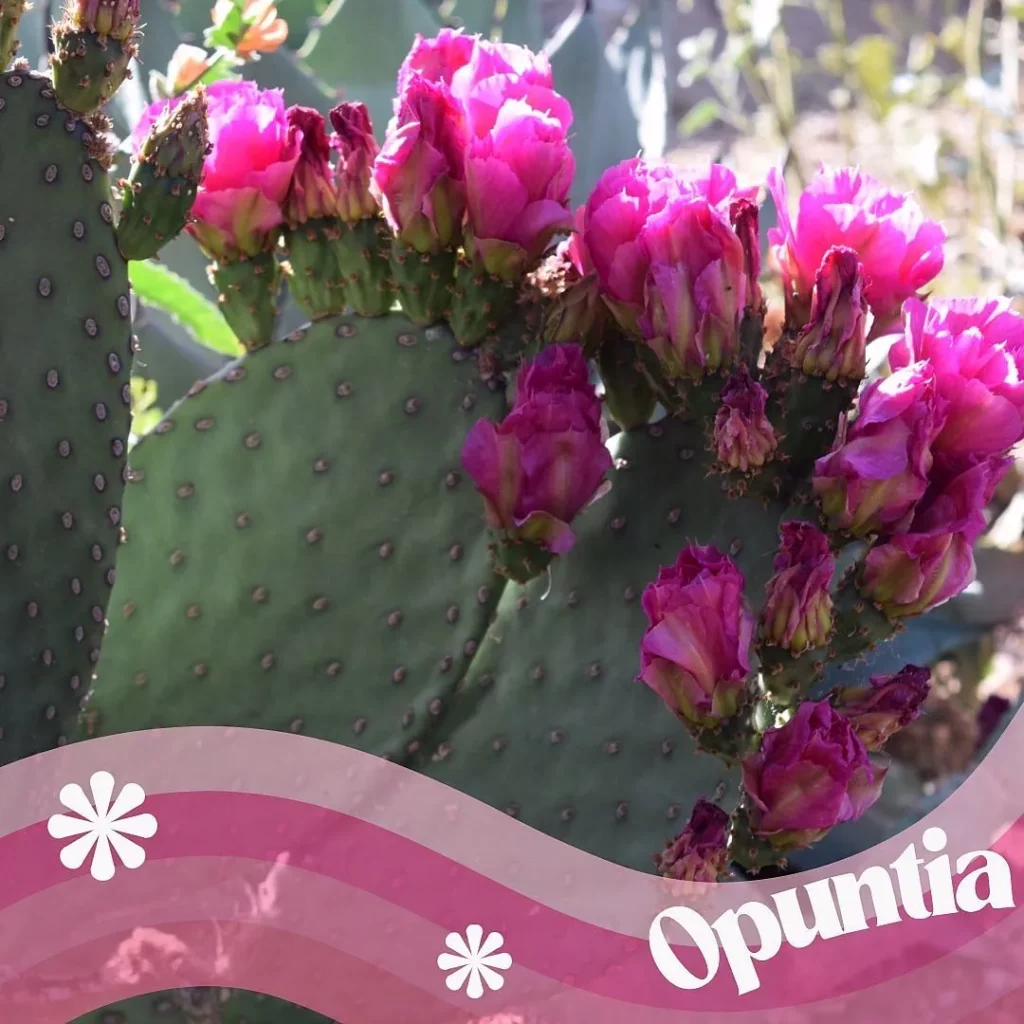
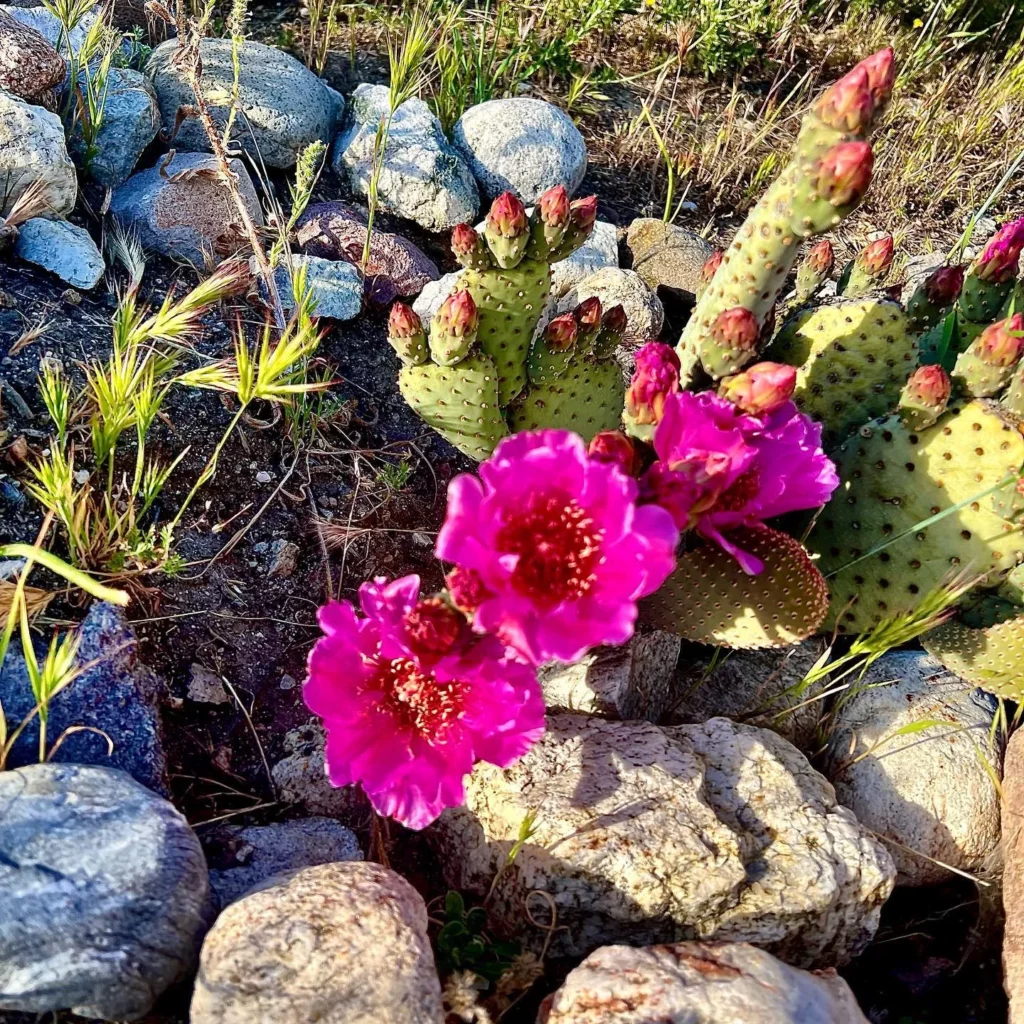
Proper watering is essential for the health and vitality of the Beavertail Cactus. While this cactus is highly drought-resistant, it still requires some watering, especially during its establishment period. Here are some important guidelines to follow when it comes to watering your Beavertail Cactus:
Watering Frequency
- For newly planted Beavertail Cacti, water every two to three weeks until they are well-established.
- Once established, the Beavertail Cactus requires minimal irrigation and generally does not need additional watering.
- It is important to allow the soil to dry out completely between waterings to prevent the risk of root rot.
Watering Method
When watering the Beavertail Cactus, it is essential to use a thorough yet gentle approach:
- Water the base of the cactus directly, soaking the soil around it.
- Avoid overhead watering, as this can lead to rot and other issues.
- Ensure that the soil is well-drained to prevent waterlogging.
Signs of Under or Overwatering
It is important to observe your Beavertail Cactus for signs of under or overwatering:
- Underwatering: If the cactus starts to wrinkle or shrink, it may be a sign that it needs more water.
- Overwatering: If the cactus becomes mushy, discolored, or develops a foul smell, it is likely suffering from overwatering. In this case, reduce watering immediately and adjust your watering schedule accordingly.
Beavertail Cactus Fertilizing
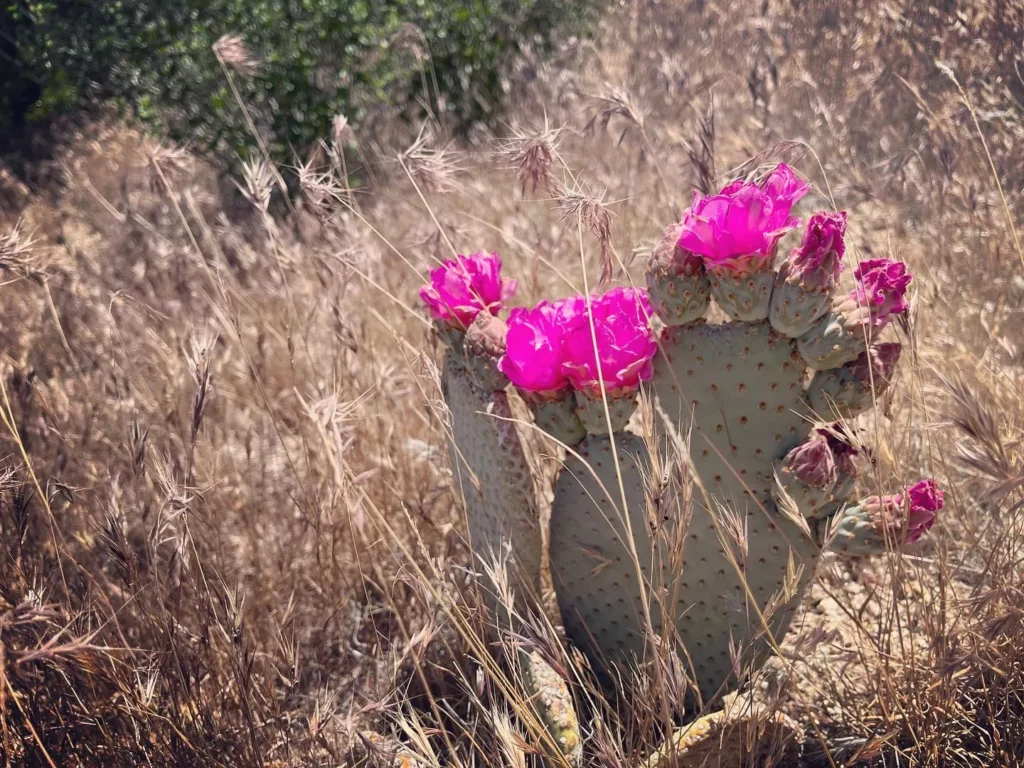
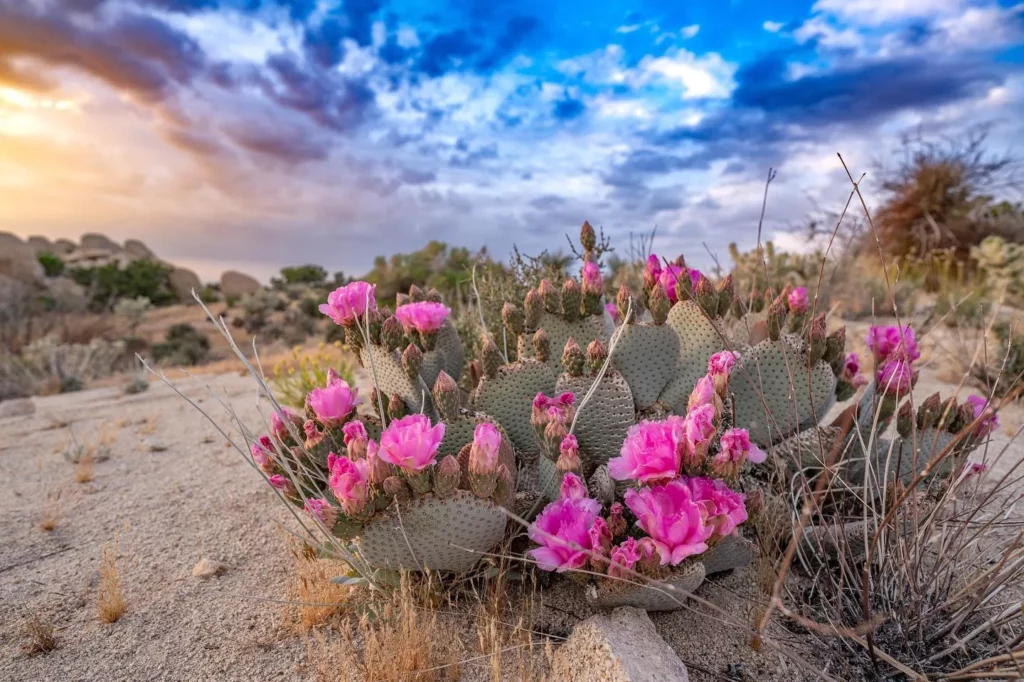
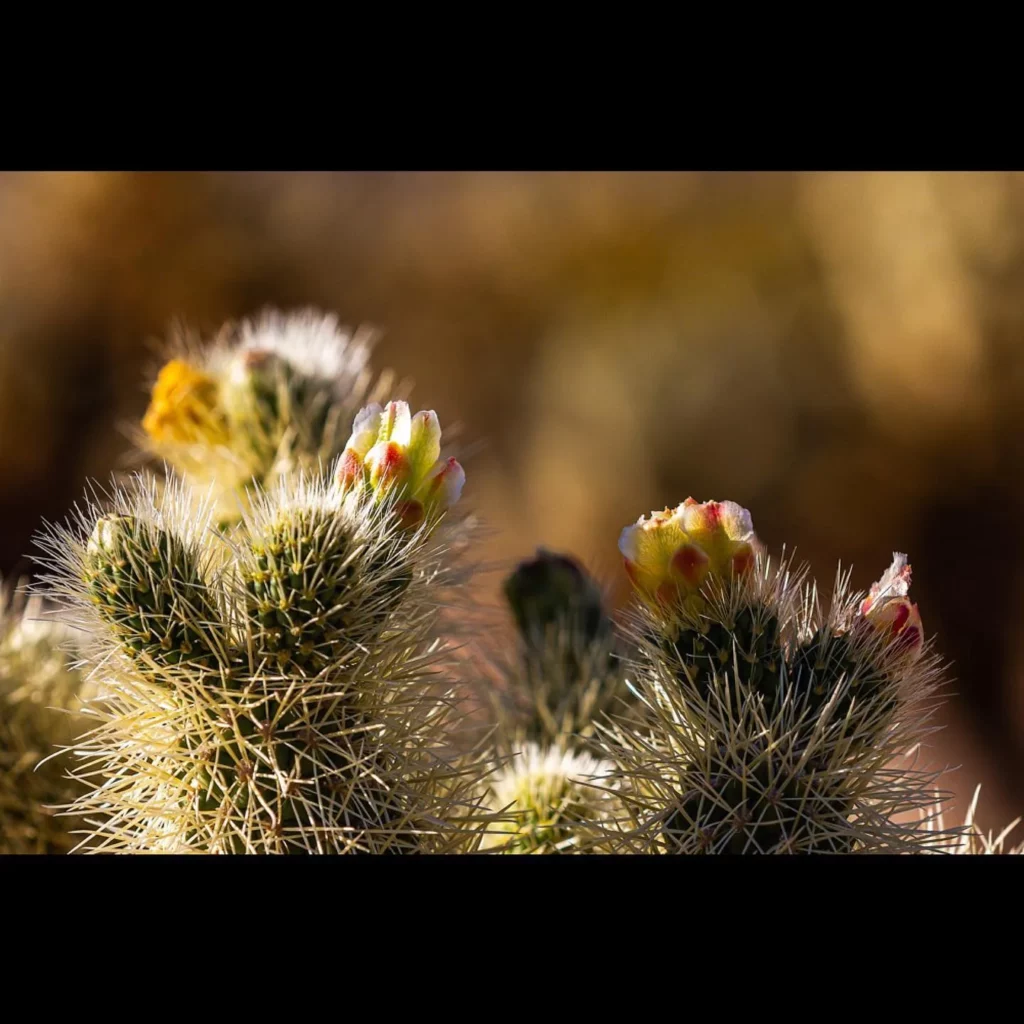
Fertilizing the Beavertail Cactus is generally not necessary, as this resilient plant can thrive without additional nutrients. However, if you wish to enhance its growth and flowering, you can apply a diluted water-soluble fertilizer during the spring and summer months. It is crucial to use a weak concentration to avoid overfertilizing, as excessive nutrients can harm the cactus.
When fertilizing the Beavertail Cactus, it is essential to follow the manufacturer’s instructions for proper application and dosage. Overfertilizing can cause nutrient burn, leading to damage and potential death of the plant. Therefore, it is always better to err on the side of caution and apply less fertilizer than to risk overdoing it.
Beavertail Cactus Potting
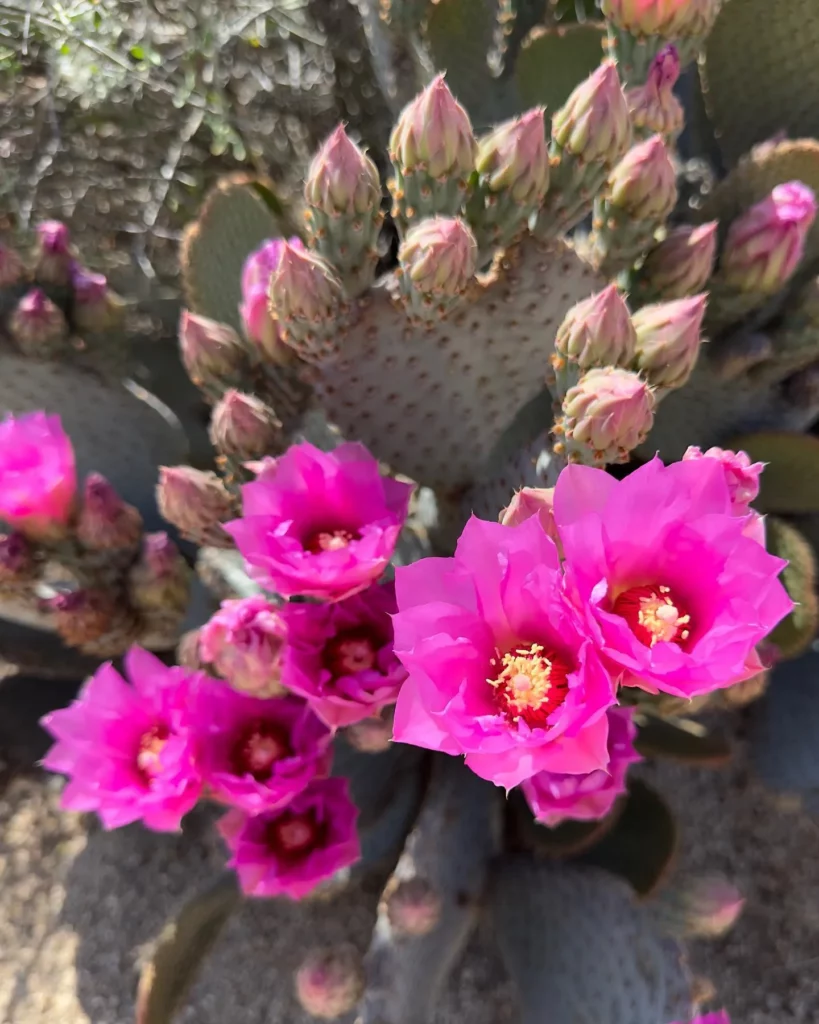
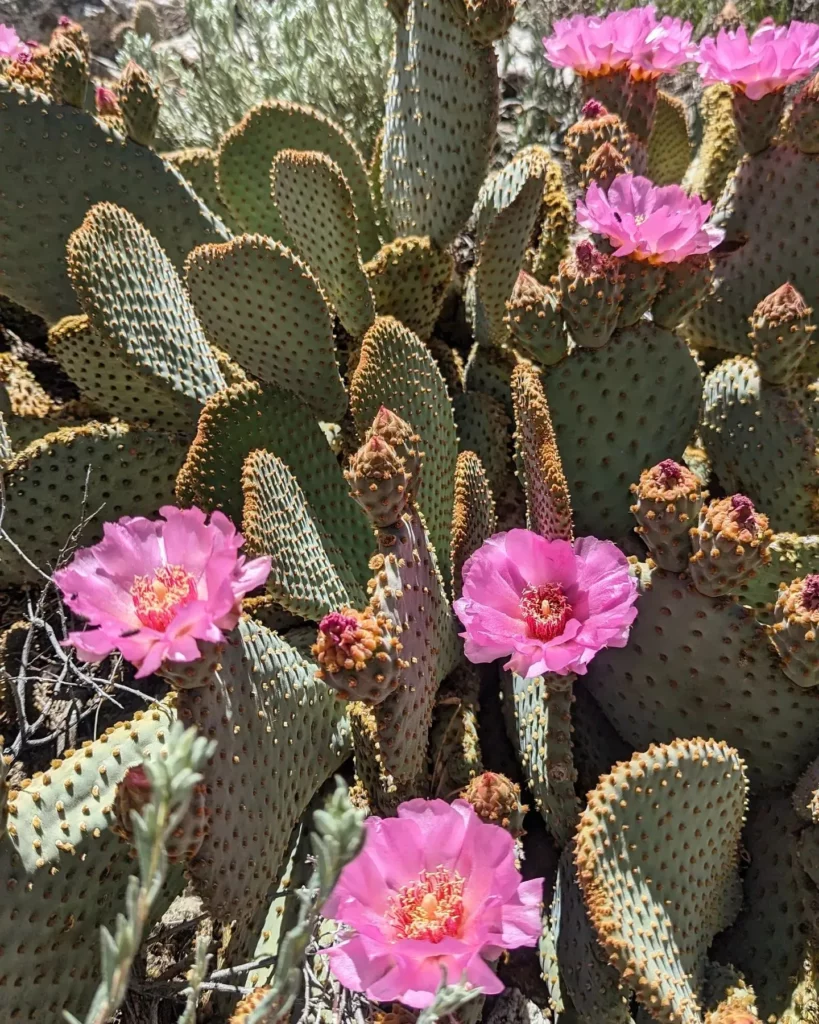
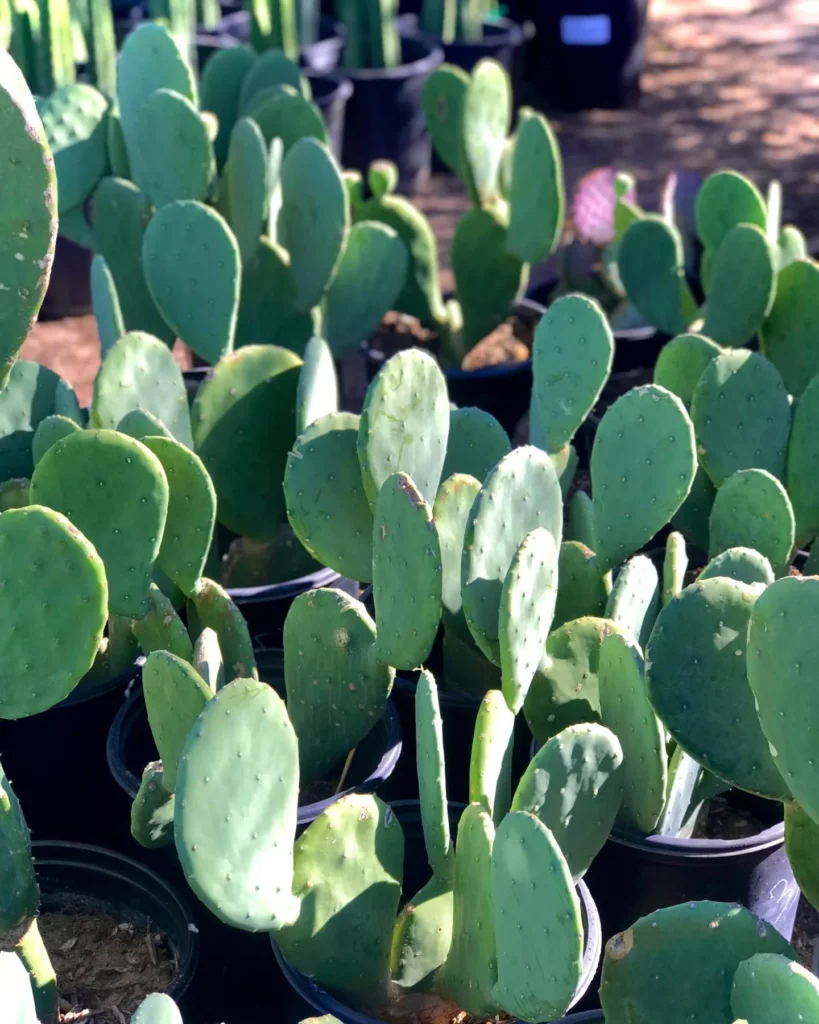
When it comes to potting your Beavertail Cactus, it’s important to choose the right soil mixture and container to ensure its healthy growth. Start by selecting a well-drained sandy or gravelly soil mixture that mimics the cactus’s natural habitat. This type of soil allows excess moisture to drain away, preventing the roots from sitting in soggy conditions.
Next, choose a suitable container for your cactus. Make sure the pot has drainage holes to prevent waterlogging, which can lead to root rot and other issues. The size of the pot should provide enough space for the cactus to grow and develop comfortably. Remember, Beavertail Cacti can reach a height of up to three feet and can spread up to four feet wide, so allow room for their expansion.
If you find that your Beavertail Cactus is outgrowing its pot or becoming too large for your space, you can control its size and spread by removing pads. By carefully cutting away excess growth, you can maintain the plant’s desired shape and manage its overall size. Just make sure to wear protective gloves to avoid any irritation from the cactus’s spines.
Tips for Beavertail Cactus Potting:
- Choose a well-drained sandy or gravelly soil mixture.
- Use a container with drainage holes to prevent waterlogging.
- Select a pot that allows sufficient space for the cactus to grow and develop.
- Control the size and spread of the plant by removing pads if necessary.
- Wear protective gloves when handling the cactus to avoid skin irritation.
With the right potting techniques and proper care, your Beavertail Cactus can thrive in a container, adding beauty and interest to your sunny patio or deck.
Beavertail Cactus Propagation
If you’re interested in expanding your collection of Beavertail Cacti, propagation is a great way to do it. There are several methods you can use to propagate these unique and beautiful cacti.
Pad Propagation
One common method is pad propagation. Start by carefully removing a pad from an existing Beavertail Cactus, making sure to wear gloves to protect against the bristles. Allow the cut end of the pad to dry for a few days until a callus forms. Then, plant the pad in a well-drained mixture of half soil and half sand. Over time, the pad will develop roots and start to grow into a new plant.
Seed Propagation
Another option is seed propagation. Sow Beavertail Cactus seeds in warm weather and well-prepared soil. Keep the soil consistently moist until the seeds germinate. It’s important to note that growing cacti from seeds can be a slow process, as it can take several years for the plant to reach maturity and start producing its characteristic paddle-like leaves.
Air Layering
For a more advanced method, you can try air layering. This involves stripping the bark from a section of the plant and encouraging root growth. While effective, air layering requires precise timing and careful attention to detail. It’s recommended for experienced gardeners or those looking to experiment with different propagation techniques.
Beavertail Cactus Growth and Development
The Beavertail Cactus is a slow-growing plant that exhibits steady growth and development over time. With proper care and suitable environmental conditions, this cactus can reach a height of up to three feet and spread outwards, reaching a width of four feet. As the cactus matures, it forms clumps and spreads through new pad growth, creating an attractive and vibrant display.
Key Points:
- The Beavertail Cactus grows slowly but steadily, reaching heights of up to three feet and widths of four feet.
- As the plant matures, it forms clumps and spreads through new pad growth.
- The cactus produces oval-shaped segments and may bloom in late spring with showy fuchsia-colored to reddish-purple flowers.
- Regular removal of dead pads helps maintain the plant’s vibrance and attractiveness.
The growth and development of the Beavertail Cactus are influenced by a combination of factors, including sunlight exposure, water availability, and overall care. Providing the cactus with ample sunlight and a well-drained soil helps promote healthy growth. Additionally, minimal watering is required once the cactus is established, as it is highly drought-resistant and adapted to arid environments.
- The Beavertail Cactus demonstrates slow but steady growth, reaching heights of three feet and widths of four feet.
- Regular removal of dead pads maintains the plant’s vibrance.
- The cactus blooms in late spring with beautiful fuchsia-colored to reddish-purple flowers.
- Providing proper sunlight exposure and minimal watering contributes to the cactus’s overall health and development.
In conclusion, understanding the growth and development of the Beavertail Cactus is essential for its successful cultivation and maintenance. By providing the necessary care and suitable growing conditions, this cactus can thrive and become a captivating addition to any garden or landscape.
Beavertail Cactus Pests and Diseases
The Beavertail Cactus is generally a resilient plant, but it can still be susceptible to a few pests and diseases. Here are some common issues to watch out for:
Pests:
- Scale insects: These small, immobile pests can attach themselves to the cactus and feed on its sap. Inspect your plant regularly and if you notice any scale insects, you can gently remove them with a cotton swab dipped in rubbing alcohol.
- Mealybugs: Mealybugs are small, soft-bodied insects that leave a white, fuzzy residue on the cactus. They can be removed by wiping them off with a cotton swab soaked in rubbing alcohol. For severe infestations, you may need to use an insecticidal soap.
Diseases:
- Root rot: Overwatering or poor drainage can lead to root rot, which is a fungal infection that affects the roots of the cactus. To prevent root rot, make sure the soil is well-drained and avoid overwatering. If you notice signs of rot, such as discolored or mushy roots, you may need to repot the cactus in fresh, well-draining soil.
- Powdery mildew: Powdery mildew is a fungal disease that appears as a white or grayish powdery coating on the cactus pads. To prevent powdery mildew, make sure the plant has good air circulation and avoid overhead watering. If powdery mildew does appear, you can treat it with a fungicidal spray formulated for cacti.
Beavertail Cactus Maintenance
Maintaining the health and appearance of your Beavertail Cactus is simple and requires minimal effort. Here are some key maintenance tasks to keep in mind:
1. Pruning and Size Control
To control the size and spread of your Beavertail Cactus, periodically remove pads from the plant. This not only helps maintain its desired shape but also promotes new growth. Additionally, be sure to remove any dead pads to keep the cactus vibrant and attractive.
2. Protection from Skin Irritation
It’s important to keep in mind that the Beavertail Cactus has bristly spines that can cause skin irritation. Avoid planting the cactus near walkways or picnic areas where people may come into contact with it. If you need to handle the cactus, wear gloves for protection.
3. Basic Care
- Watering: Once established, the Beavertail Cactus is highly drought-resistant and requires minimal irrigation. Water the cactus every two to three weeks, ensuring the soil is well-drained. Be careful not to overwater, as this can lead to root rot.
- Light Requirements: Provide your Beavertail Cactus with ample sunlight. It thrives in full sunlight and requires a location with reflected heat. If you live in a cold northern climate, bring the cactus indoors during the winter to protect it from freezing temperatures.
- Fertilizing: The Beavertail Cactus generally does not require fertilizer. However, if desired, you can apply a dilute solution of a water-soluble fertilizer during the spring and summer, following the manufacturer’s instructions for proper application.
Beavertail Cactus Winter Care
During the winter months, it is important to provide proper care for your Beavertail Cactus to ensure its survival and health. Here are some essential tips to help you with winter care:
- Bring indoors: If you live in a colder northern climate, it is crucial to bring your Beavertail Cactus indoors during the winter. Find a location that receives sufficient sunlight, such as a south-facing window or a well-lit room. Protect the cactus from freezing temperatures by keeping it away from drafty areas.
- Reduce watering: During the winter months, the Beavertail Cactus goes into dormancy and requires less water. Reduce the frequency of watering and allow the soil to dry out slightly between waterings. Overwatering can lead to root rot, so it’s important to strike the right balance.
- Observe and monitor: Regularly check on your cactus during the winter months. Look for signs of stress or pest infestation. If you notice any issues, take appropriate action promptly. Winter is also a good time to prune any dead or damaged pads to promote the plant’s overall health and appearance.
- Prepare for spring: As winter comes to an end and the temperatures start to rise, gradually acclimate your Beavertail Cactus to outdoor conditions. Introduce it to sunlight gradually to prevent sunburn. Resume regular watering and provide appropriate care to help the cactus thrive in the upcoming growing season.
Beavertail Cactus Propagation Methods
When it comes to propagating Beavertail Cacti, there are several methods you can try. Whether you want to expand your collection or share the beauty of these plants with others, here are some propagation techniques to consider:
1. Removing Pads
One common way to propagate Beavertail Cacti is by removing pads from an existing plant. Simply cut a pad and allow it to dry for a few days until a callus forms on the cut end. Then, plant the pad in a mixture of half soil and half sand. Remember to wear gloves to protect against the bristles while handling the cactus.
2. Using Seeds
If you’re up for a longer process, you can propagate Beavertail Cacti using seeds. Sow the seeds in warm weather and well-prepared soil. Provide proper care, including sufficient sunlight and watering, until the seeds germinate and grow into new cacti.
3. Air Layering
A more advanced propagation method is air layering. This technique involves stripping the bark of a mature Beavertail Cactus and promoting root growth in the exposed area. Although it requires some skill and patience, air layering can result in a new cactus with an established root system.
FAQ
Is the Beavertail Cactus suitable for rock gardens?
Yes, the Beavertail Cactus is well-suited for rock gardens, cactus gardens, or xeriscape landscapes.
What color are the flowers of the Beavertail Cactus?
The Beavertail Cactus produces showy fuchsia-colored to reddish-purple flowers in late spring and early summer.
How often should I water a newly planted Beavertail Cactus?
Water a newly planted Beavertail Cactus every two to three weeks, ensuring the soil is well-drained. Afterward, no supplemental irrigation is necessary.
Does the Beavertail Cactus require fertilizer?
The Beavertail Cactus generally does not require fertilizer. However, you can apply a dilute solution of water-soluble fertilizer occasionally during the spring and summer if desired.
Can the Beavertail Cactus be grown in containers?
Yes, the Beavertail Cactus can be grown in containers on a sunny patio or deck. Ensure the container has drainage holes and use a well-drained sandy or gravelly soil mixture.
How can I propagate the Beavertail Cactus?
The Beavertail Cactus can be propagated by removing a pad from an existing plant and planting it in a mixture of soil and sand. It can also be propagated using seeds or by air layering.
How tall and wide can the Beavertail Cactus grow?
The Beavertail Cactus can grow up to three feet tall and four feet wide.
Is the Beavertail Cactus resistant to pests and diseases?
While the Beavertail Cactus is generally disease-free and resistant to pests like deer and rabbits, it can still be susceptible to scale insects, mealybugs, and fungal diseases like root rot or powdery mildew.
How much maintenance does the Beavertail Cactus require?
The Beavertail Cactus requires minimal maintenance once established. Periodic removal of pads and dead pads helps control the size and spread of the plant, while regular observation and care contribute to its overall health.
Should the Beavertail Cactus be brought indoors during winter?
Yes, in colder northern climates, the Beavertail Cactus should be brought indoors during the winter months to protect it from freezing temperatures. Reduce watering during this time.
What methods can I use to propagate the Beavertail Cactus?
The Beavertail Cactus can be propagated by removing pads, using seeds, or air layering. Each method requires specific steps and considerations, such as timing and environmental conditions.

